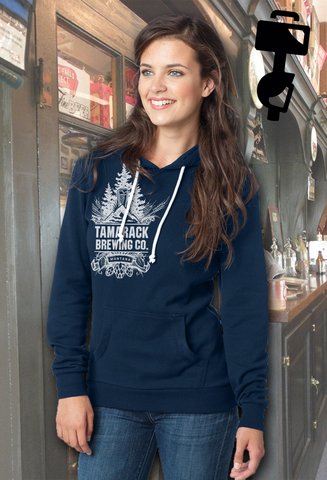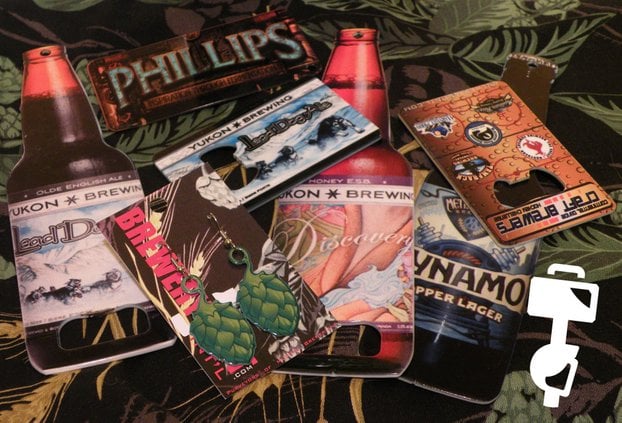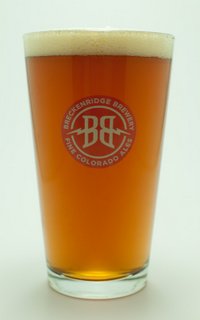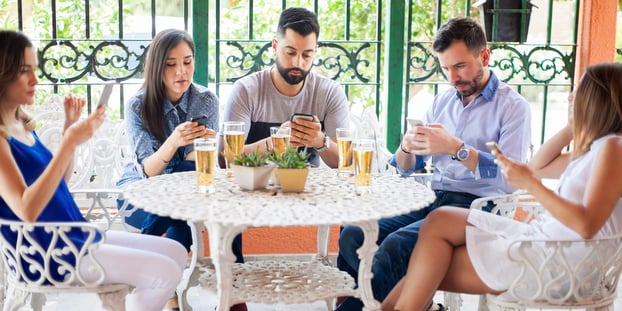Craft beer is more than creating the perfect brew. It’s about supporting small businesses, local entrepreneurs or your old college buddy who just opened a brewery. Craft beer hands the power of choice back to the drinker. It’s an experience that goes beyond the brew, and as savvy business men and women, craft brewers are leveraging that experience beyond the beer and expanding into merchandise.

“We want to relay a consistent brand message to our consumers, both through our beer and the merchandise we offer,” said Matt Eldridge of the Breckenridge Brewery marketing team. “So we always make sure to have a Breckenridge Brewery branded piece on the forefront, with specific beer branded pieces as secondary. Also, we try to offer and highlight specific beer branded products based on those top selling beers. In our case, Agave Wheat is a great example, and we have a few Agave Wheat pieces offered.”
From hats and bottle openers to T-shirts and tap handles, the sky is the limit when choosing merchandise that can support your beer brand. Unfortunately, small craft brewers typically have a budget that is more down to earth. If you’re looking to start building your brand’s merchandise offering, T-shirts are a great place to start.
“T-shirts are a tried and true method for people to get their name out there,” explained Mike Lozar, owner of Brewery Art International — a company that provides graphic design services and merchandise to the craft brewing industry. Lozar said that most of his clients order 60 to 144 T-shirts per order at around $7 to $10 per T-shirt. “The price-point for T-shirts both at the brewer level and consumer level is just right. You can offer your customers some value and something that looks cool, while reminding them of the experience they’ve had.”
Looking cool is always important and Lozar explained that the style of T-shirts in the young craft brewing industry is starting to evolve from the one-T-shirt-for-all design of old.
“As more and more women get involved in the craft brewing industry — on both the management and consumer sides — we’re starting to see more interesting fashion-style garments that are more exciting to offer,” he said. “They’re female-specific and unisex, but they’re focused on the younger beer drinkers, in their early 20s to late 30s, that are more fashion-forward. They might not fit the 40 year old with a belly, but they certainly flatter the younger form.”
Sweatshirts are also seeing a shift in style. Gone are the days of the heavy, shapeless sweatshirts, in favor of thinner, trendier choices, offering form-flattering and functional styles. Regardless of the clothing style, any time you can get your brand on the chests or backs of consumers, it’s a brand win.
“Any wearables — T-shirts, hats, hoodies, etc. — are absolutely cost-effective because every item sold or given away becomes a new billboard for your brand,” Eldridge agreed. “Next to wearables, I would say, are other highly used necessities like bottle openers, key chains and water bottles. Again, this is free branding. It’s not hard to find quality, inexpensive vendors for this kind of merchandise. You just have to do a little research.”
By offering items such as bottle openers and glassware, you offer a product that strengthens your brand’s tie to the beer drinking activity. While some breweries may be moving to canning lines, the bottle opener is still an icon of the craft beer industry, which is driven by pioneering home brewers who bottle their beers. And let’s not forget those awesome branded pints and unique glassware that become treasured collectibles in the cupboards of craft beer enthusiasts.
“The pints that people take from a brewery are great,” Lozar said. “I know brewers have to order 1,000 or more units for it to be a cost-effective purchase, but people take those, collect those and cherish those kinds of things. It’s a wonderful way for breweries to use the glassware when they’re manning their tasting rooms, but it’s also a product that people are constantly seeing.”
Judging a beer by its label
Take an objective look at your brewery’s logo. What is it saying to consumers? Is it inviting them to try the beer? Does it relate to the experience of visiting the brewery? Does it reinforce the quality that you work hard to achieve in brewing your beer? Sure, these are complex and even theoretical questions, but essential to your branding plan if you are making room in your budget to stick your logo on merchandise.
“I’ve seen lots of great breweries with really crappy design work. Conversely, I’ve had some really crappy beer and spectacular designs. Good design plays an important role in the future of the brewery, just like in any other business,” Lozar said. “It’s the face of the brewery. It’s what ultimately draws people in and gives them an initial feeling about the brewery. If it’s done poorly, then people may still go in and try the great beer, but given two options, I think the better designed option is going to have more customers. It’s part of the experience. You’re surrounded by the brewery’s identity while you’re enjoying their product. It’s a key element to a successful brewery and business in general.”
Lozar stressed the importance of working with a professional when creating your brewery’s logo. Or if your logo is already in use, a professional can help enhance its presentation on your choice merchandise.

“In some cases, brewers get married to an identity and that’s what they’re sticking with,” Lozar said as he explained the design philosophy of integrating an existing logo into a new presentation. “What I run into is brewers on shoe-string budgets — and I completely understand, I’m on the same budget — but they ended up having a relative work up a logo for them and that’s what they build their identity around. That’s a difficult thing to overcome because they’re often so attached to that image, even if it’s not an effective image. They’re not willing to break free from that. In those cases, I tailor whatever design work I’m asked to do to make that image look as good as possible within the product — be it a label design or T-shirt or advertising design. I try to add a little more of a professional look to it.”
It’s all about tying the experience into the look and feel of your brewery. If you operate a brewpub, for instance, it would be worthwhile to integrate the food and beer sides of the company.
“Our Tasting Room connected to our main production facility in Denver is a fantastic BBQ joint,” Eldridge said. “They have their own image that ties in the Breckenridge Brewery brand. But because they are very well known for their BBQ, we create some merchandise — T-shirts — for them that incorporates and highlights the BBQ. This BBQ specific merchandise, however, is just sold through the Tasting Room’s storefront.”
“We use our brewery merchandise for marketing. We’ll give away swag and wearables at events we’re at, as well as to our wholesaler reps and the staff of on and off premise accounts.” — Matt Eldridge, Breckenridge Brewery marketing teamEldridge presented a good example of how customers encounter a brewery’s identity through more than just the beer. Sure there’s the beer and merchandise, but your logo pops up on websites, social media, news stories and at industry events. You want to make sure that your logo is as strong as it can be.
How much you can spend on a designer and merchandise, however, will be tied to your budget. Both Lozar and Eldridge agreed that there’s no magic number for how much professional design, presentation and merchandise will run you. It largely depends on the size of your brewery.
“Each project is different, each customer is different,” Lozar explained. “You can look at logos from around the world for instance. The Nike swoosh cost something like $10 and has gone on to be a worldwide status symbol. The new BP logo was $211 million. I can’t speak for all designers or photographers, but let’s say a logo can cost from $450 to $1,000 depending on how unique you want it and how many revisions it goes through. A label or poster may be from $150 to $800. The amount of time and number of revisions required is often the biggest factor. T-shirt and apparel design can be as low as $100 and as high as $500 or more.”
Eldridge urged breweries to stay within their means. “You can’t compare the design/marketing budget for a 60,000-bbl capacity craft brewery to that of a 2,000-bbl capacity brewpub. Just the same, you can’t compare a MillerCoors brand’s design/marketing budget to that of a craft brewer.”
Always Be Closing
The shipment has arrived and you unbox your awesome new merchandise. You’re busting at the seams with T-shirts, bottle openers and custom tap handles. Now how do you sell them? While offering the cool products at your brewery, tasting room and/or brewpub is a no-brainer, you might also want to consider adding a web store front to your website.

“We market our web store merchandise by talking about it through our social media outlets, our website and our newsletter,” Eldridge explained. “For example, we may highlight a new product we’ve got, such as a cool new bike jersey, by taking a picture, posting that across all platforms, and directing people to our web store.”
It’s best to judge sales from your different outlets (brewpub, website, tasting room) on their own merits. While your tasting room might get a ton of foot traffic and most efficiently sell merch, your online store provides a longer reach and an outlet for non-local customers. If you already have a powerful online presence and social media stronghold, it could be worth it to put your merchandise online.
But wait! Don’t just slap it on your webpage. To echo Lozar, professionalism goes a long way. Remember, be it the website or your brewery, you want to create a consistent brand experience across all media.
“I am a firm believer that the presentation of the products makes a difference in sales,” Eldridge said “When we first launched our web store, we took basic pictures of all of our merchandise. Really, they were amateur photos. I brought in a photographer, Randall of R! Series Photography, to get some better shots for a very minimal cost. The photos were exponentially better and raised the perceptive value of all of our products. The photos were professional, showed more detail and character — all of our apparel was shot on models — and simply made every product more appealing. Once we put up the new photos, our sales immediately increased and have continued to increase since.”
It all comes back to professional presentation. Although it might seem like an added cost in your tight budget, creating a cohesive brand takes time and design. If you can find a designer you can build a relationship with it can do wonders for your brand and give it a consistent feel no matter how your customer interacts with your brewery.





terryhill007 says
Thanks for the great article. I am a professional graphic artist and designer, specializing in branding, identity, packaging, marketing collateral….this helps me to educate new craft breweries in how important their branding is to their overall sales and marketing plan. Great stuff! I am new to this site but now any more, look forward to reading more great info from you guys…thanks for this!!! terryhilldesigns.com
Craftbrewshop says
Excellent article. I am working on building a marketplace (similar to etsy or eBay) but just for breweries to sell their merchandise and apparel. I have quite a ways to go on getting it where I would like it to be, but a lot of planning and redesign is being worked on behind the scenes. Just wanted to say this is a great post on this subject and I liv this site overall, lots of great content.
RT @CraftBrewingBiz: Beyond beer: Craft beer merchandise enhances the experience with @BreckBrew http://t.co/irNvvSaiSw #sundayreading
Shawn says
And the merchandise lets your loyal customers help brand your brand!
RT @CraftBrewingBiz: Beyond beer: Craft beer merchandise enhances the experience with @BreckBrew http://t.co/6cDhRkql0E